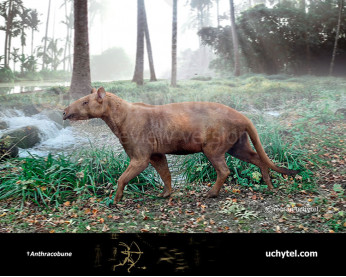Arsinoitherium
0909Arsinoitherium (Arsinoitherium Beadnell, 1902)
Order: Embrithopoda
Family: Arsinoitheriidae
Dimensions: length - 5 m, height - 2,2 m, weight - 2500 kg
Temporal range: late Eocene - early Oligocene of northern Africa (36 - 30 million years ago)
A typical representative: Arsinoitherium zitteli Beadnell, 1902
Arsinoitherium is an extinct genus of paenungulate mammal related to elephants, sirenians, hyraxes and the extinct desmostylians, as well as to other extinct embrithopods.These species were rhinoceros-like herbivores that lived during the late Eocene and the early Oligocene of northern Africa from 36 to 30 million years ago, in areas of tropical rainforest and at the margin of mangrove swamps; a newly discovered species, Arsinoitherium giganteum, lived in Ethiopia ~27 million years ago. When alive, it would have superficially resembled a rhinoceros, and have been about 1.8 metres tall at the shoulders, 3 metres long with a weight over 2.5 tons. The most noticeable feature of Arsinoitherium was a pair of enormous knife-like horns with cores of solid bone that projected from above the nose, and a second pair of tiny, knob-like horns on top of the head, immediately behind the larger horns. The skeleton is robust but shows that it was descended from a cursorial ancestor, and that the beast may have been able to run if it had to like a modern elephant or rhinoceros. Its limb bones also suggest that the columnar legs of the living animal were elephant-like (especially since they ended in five-toed feet), rather than rhinoceros-like. Arsinoitherium had a full complement of 44 teeth, which is the primitive state of placental mammalian dentition, suggesting that it was a selective browser. The large size and hefty build of Arsinoitherium would have rendered it largely immune to predation. However, creodonts may have preyed on the young or infirm.
Arsinoitherium (Arsinoitherium Beadnell, 1902)
Order: Embrithopoda
Family: Arsinoitheriidae
Dimensions: length - 5 m, height - 2,2 m, weight - 2500 kg
Temporal range: late Eocene - early Oligocene of northern Africa (36 - 30 million years ago)
A typical representative: Arsinoitherium zitteli Beadnell, 1902
Arsinoitherium is an extinct genus of paenungulate mammal related to elephants, sirenians, hyraxes and the extinct desmostylians, as well as to other extinct embrithopods.These species were rhinoceros-like herbivores that lived during the late Eocene and the early Oligocene of northern Africa from 36 to 30 million years ago, in areas of tropical rainforest and at the margin of mangrove swamps; a newly discovered species, Arsinoitherium giganteum, lived in Ethiopia ~27 million years ago. When alive, it would have superficially resembled a rhinoceros, and have been about 1.8 metres tall at the shoulders, 3 metres long with a weight over 2.5 tons. The most noticeable feature of Arsinoitherium was a pair of enormous knife-like horns with cores of solid bone that projected from above the nose, and a second pair of tiny, knob-like horns on top of the head, immediately behind the larger horns. The skeleton is robust but shows that it was descended from a cursorial ancestor, and that the beast may have been able to run if it had to like a modern elephant or rhinoceros. Its limb bones also suggest that the columnar legs of the living animal were elephant-like (especially since they ended in five-toed feet), rather than rhinoceros-like. Arsinoitherium had a full complement of 44 teeth, which is the primitive state of placental mammalian dentition, suggesting that it was a selective browser. The large size and hefty build of Arsinoitherium would have rendered it largely immune to predation. However, creodonts may have preyed on the young or infirm.

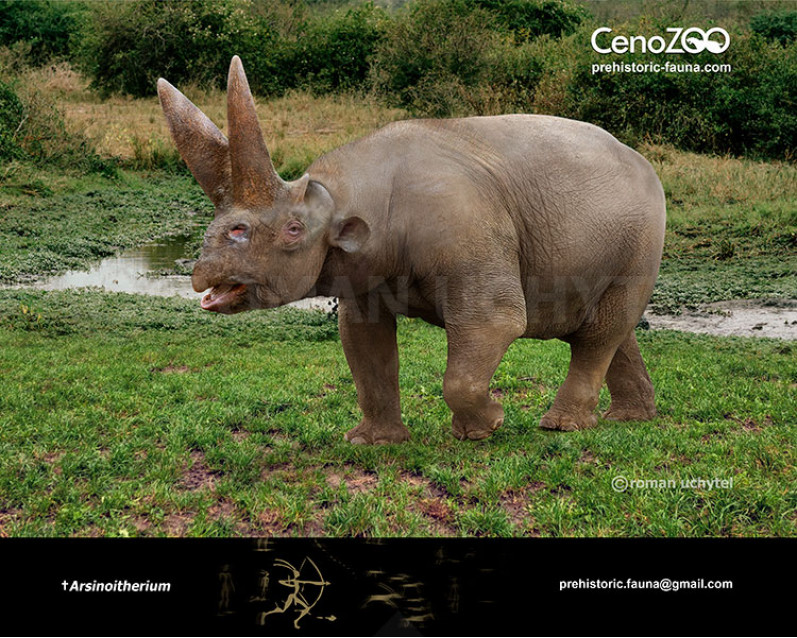
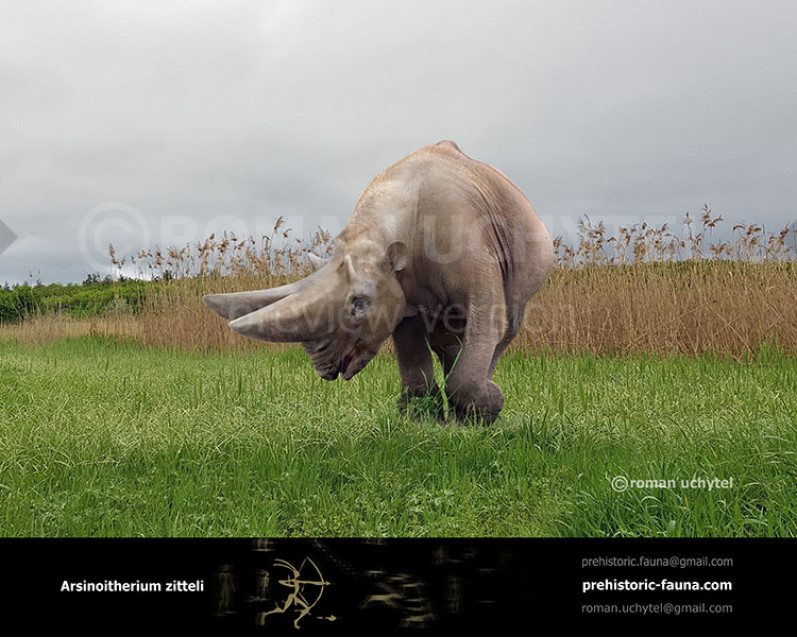
-797x638.jpg)
2-797x638.jpg)
1-797x638.jpg)
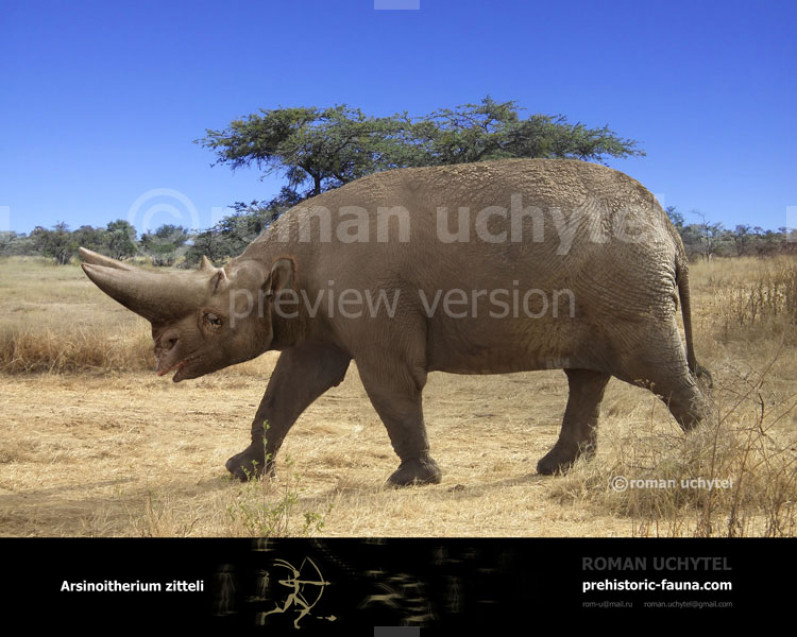
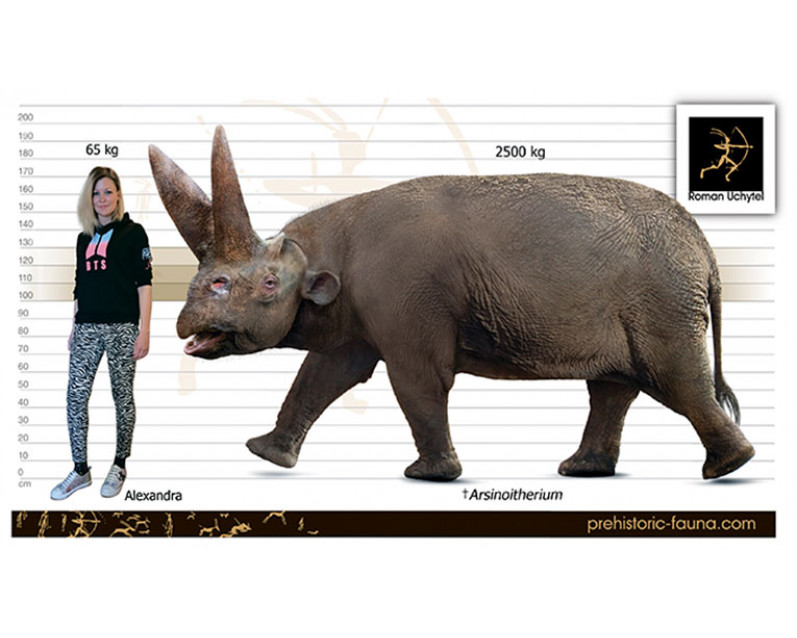


-70x56.jpg)
2-70x56.jpg)
1-70x56.jpg)


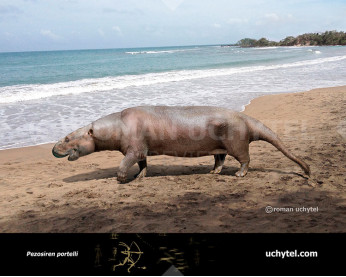
-346x277.jpg)

